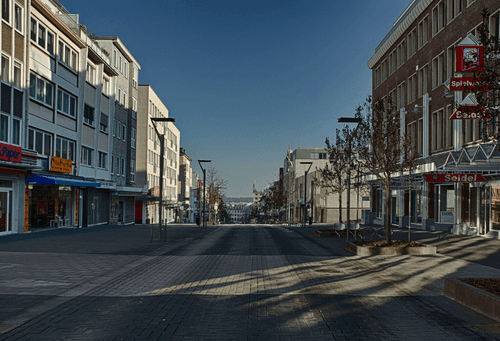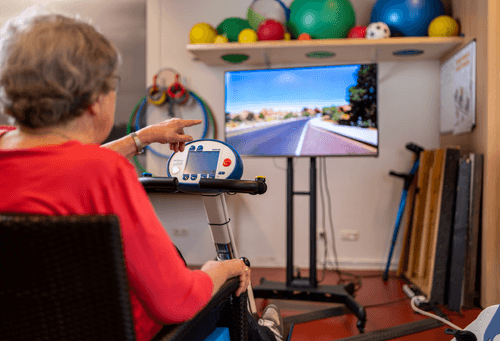Restlessness, urge to walk, and disturbed sleep patterns caused by dementia
When thinking of dementia, many people primarily associate it with 'forgetfulness' and 'memory problems.' However, a perhaps less well-known but equally relevant symptom of the disease is the feelings of restlessness that a person with dementia can experience. Alzheimer Netherlands describes these feelings of restlessness beautifully on their website [Alzheimer Netherlands - Dealing with restlessness].
This restlessness can manifest in various ways, such as searching for things or people, an urge to walk, lying awake or having difficulty falling asleep, wandering at night, having too much energy, becoming easily irritated, feeling restless and impatient in the afternoon and evening, but also always wanting company or displaying uninhibited or impulsive behavior. Strangely, it is very difficult for the person in question to resist these feelings. It feels as if action must be taken. This is not only very confusing and unpleasant for the person with dementia but also places a heavy burden on caregivers and family members when people with dementia experience restlessness.
Sometimes these feelings are triggered by things in the environment. However, there might not always be an identifiable cause, making it challenging to manage. Although these feelings of restlessness are driven by the brain, the precise cause remains unclear. Restlessness can have a physical basis; for example, when people feel pain, hunger, or thirst, they naturally want to take action to alleviate these discomforts. People with dementia may no longer be able to communicate such needs with their environment, but the urge to act persists.
Changes in the brain
Research suggests that the changes in the brain associated with dementia also affect the brain structures involved in regulating and initiating actions [Warfield 2023]. It also appears that the disease alters brain areas involved in the sleep-wake cycle, the natural rhythm of when you are active and when your body prepares for rest, relaxation, and sleep [Duncan 2020]. This natural rhythm, known as the circadian rhythm, encompasses all the physical, mental, and behavioral changes a person experiences within 24 hours. The rhythm is linked to the internal biological clock, and these behaviors are controlled by brain areas involved in regulating this internal clock [Warfield 2023]. Dementia also causes changes in these brain networks.
Sundowning: restlessness in the afternoon and evening
For example, typically we wake up around the same time in the morning and feel tired around the same time in the evening. This rhythm is often disrupted in people with dementia [Duncan 2020], often manifesting as increased restlessness and activity in the afternoon and evening, a phenomenon known as 'sundowning' [Carrarini 2021] en actief worden, een fenomeen dat ‘sundowning’ genoemd wordt [Toccaceli 2023, Canevelli 2016] (Officially: 'Sundowning means the emergence or worsening of neuropsychiatric symptoms in the late afternoon or early evening').
Cause and effect
Boredom or excess energy is also mentioned as a possible cause of restlessness. Due to dementia, it is sometimes no longer possible to understand cause and effect properly. For instance, that engaging in an enjoyable activity can make you feel better. There are indications that inactivity can lead to increased restlessness, and that sufficient physical activity can help reduce restlessness [Scherder 2010]. However, the research literature is not yet conclusive on this [Jabbour 2023].
Staying active
Generally, physical activity improves physical well-being and can reduce the risk of falls and complications. Additionally, sufficient physical activity positively affects mood, reduces anxiety, and can improve sleep patterns. This can indirectly have a positive effect on restlessness. Regular physical activity throughout the day also provides structure and may help regulate the internal clock. It is important to consider an individual's capacities and needs and to avoid overstimulation. The general advice is a personalized approach: gentle activities like cycling without resistance at set times, and focusing on what gives someone pleasure and a good feeling.
Bike Labyrinth can also help with this; we offer a large assortment of routes that are low in stimuli. These routes are indicated by one icon on the main screen and often feature beautiful and peaceful routes through nature. In the future software of Bike Labyrinth, it will also be possible to set only low-stimulus routes via the settings menu. Alternatively, one can cycle through a familiar environment where recognition and memories provide a good feeling.






